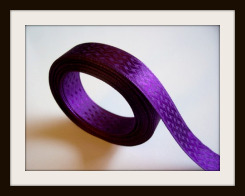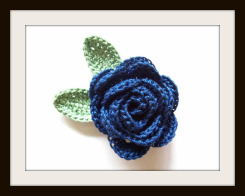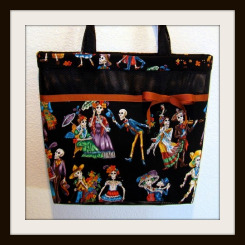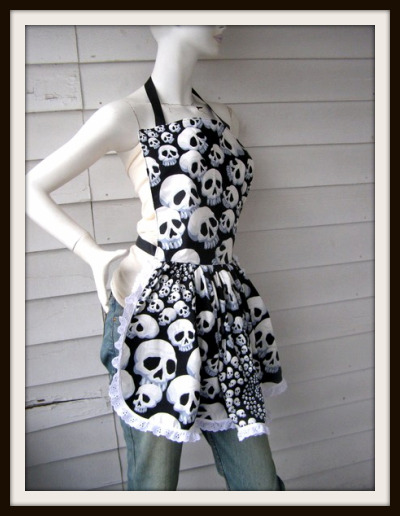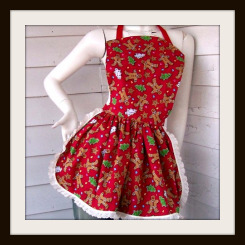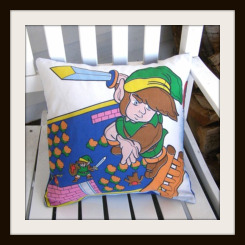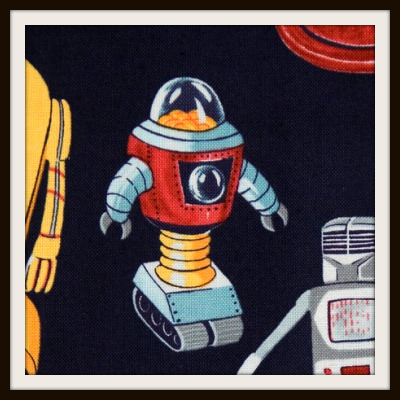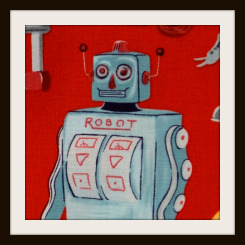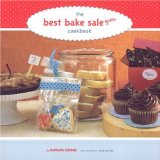 |
I’ve been baking for bake sales since my first wee one’s play group seven years ago, and in that time I’ve had some winners and some some losers and I still use some of the trusty recipes from my Good Housekeeping Cook Book I honestly love a cookbook that takes cooking or baking seriously, how else can you get to the serious business of making it taste/look divine, right? |
| Outlining what makes a bake sale recipe exactly what it needs to be, (presentation, portability and portions – naturally), options abound! Cookies, bars / brownies, breads / coffee cakes, cupcakes / rolls / muffins, cakes and pies!
The thumbprint cookies were a hit when I made them for the kid’s school bake sale, and I tried the blueberry pie, pumpkin pie and cherry pies during Pie Year! All recipes were easy to follow and none had any errors. The very last chapter is called Something Extra, with fun, never fail bake sale standards like popcorn balls, candied / chocolate covered / apples and trail mix. Plus other fun ideas like English toffee packaged in small portions, homemade marshmallows and marshmallow fudge! |
|
Last year, during my self-inflicted bake-a-pie-a-week challenge, I vowed to bake a cake a week in 2010. As soon as I did my friend Gill said she wanted to make Tiramisu! I loooooove Tiramisu, but I’ve never tried to make it before. She held out until March, then came over with all the ingredients and this recipe.
| Cake #13 – Classic Tiramisu | |
|
6 eggs 1-1/4 cups white sugar 1-1/4 cups mascarpone cheese |
1-3/4 cups heavy whipping cream 2 (12 oz) packages ladyfingers 1/3 cup coffee flavored liqueur |
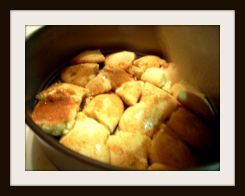
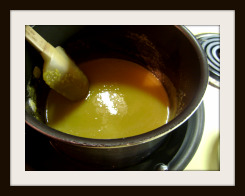
Gill broke up ladyfingers to lay in the bottom and coated them in Kahlua while I mixed the egg yolks and sugar over a double boiler (10 minutes or so). Then I whipped them till they were yellowy and thick. The mascarpone gets added to the whipped yolks and separately, Mr Kitchen Aid whipped the cream till it was perfect and that was very carefully folded into the mascarpone/whipped yolk mix.


Then, we put it all together. Half the cream filling goes on top of the layer of Kahula-soaked ladyfingers, then more ladyfingers are broken and laid on top and also soaked in Kahula. Then the rest of the filling of course. We were going to cover the top of it in chocolate curls but all that cream seemed a little scary calorie-wise, so we just sprinkled some cocoa over it instead. We put it in the fridge, for much less time than we should have I’m sure, and it was amazing. It didn’t hold it’s shape as much as I would have liked but it was so good it didn’t matter. Also pictured is a mug with four ladyfingers soaking in milk, to be crunched up and eaten ‘once they’re soft enough’. Even just writing that is grossing me out, thoughts? Do you put things in milk till they’re all mushy?
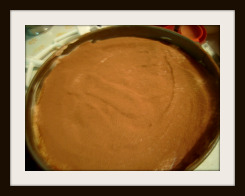

As you can imagine, with three wee ones under 10 I have read a whole lot of bedtime stories. Usually, there are a few that stick and have to be read over and over and over (and over) again. Elliot Bakes a Cake (An Elliot Moose Story) is one of them. The recipe that Elliot uses in this book is included at the end. Naturally, I’ve been asked to make it for ages, so when I needed a simple cake for wee one #3’s first birthday party I thought of it.
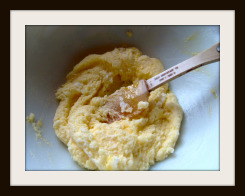

It was a great recipe for the kids to make themselves. They started out with a ceramic bowl and a wooden spoon (as they had in the story) but once it was time to blend in the milk they turned to the trusty Kitchen Aid, which is usually hands off.

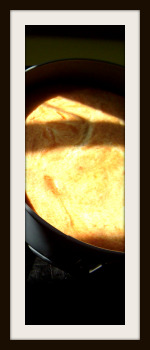

As expected, it mixed until smooth and the layers came out beautifully. We whipped up some purple frosting for it, too! We took it to my Grandmother’s for Sunday supper and birthday presents. It was plain enough for a one year old, but it held it’s own with coffee. I made this again and again after as bases for cakes where the topping was key. Officially, it’s called A Very Special Cake in the book, and it was Cake #13 in Cake Year!
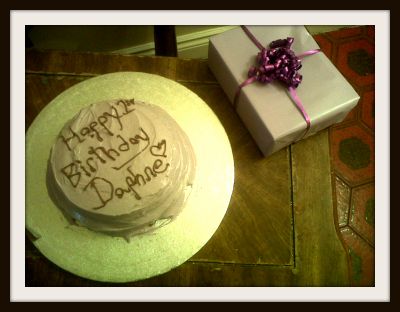
Let’s start with your shop, Paper Boat Boutique and Gallery. What
was behind your plan to open a shop devoted to independent crafts?
Paper Boat opened in June of 2005 as a result of myself and my business partner Kim Kisiolek realizing there was no brick and mortar space in Milwaukee that specialized specifically in indie designers. I had made a lot of connections online through my business at the time Flying Fish Design as well as through coordinating Art vs. Craft (Milwaukee’s indie craft fair), so it was a fluid step to get things going on a retail level.

Tell me about your shop! What sort of items do you carry, is there
an online counterpart?
Paper Boat works directly with makers who produce their work in house or have it manufactured on a small scale. We carry stationary, jewelry, household items, clothing, books, plush and art objects. We also have a small gallery space that has hosted shows by Jill Bliss, Jenny Hart, Katy Horan and Monica Canilao to name a few. We are looking forward to the solo show with Lisa Congdon (of Rare Device) this December! We don’t have an on-line shop because the whole point is for the Milwaukee public to be able to come in and interact with the work, most of the makers have their work available online and we direct people to their sites if necessary.
The bi-annual craft festival you put together, Art vs Craft, seems
like more than your average craft show. What do you feel makes it
different?
We receive over 3 times as many applications as spaces for Art vs. Craft and this allows us to hand pick the vendors that we feel are bringing the most innovative, quality, unique work to the event. Every year we have returning vendors new people apply as well.


Do you have help putting the show together? Plug your friends!
Art vs. Craft is coordinated by myself and Kim Kisiolek. There are a handful of amazing volunteers that help the day before and day of to make the event run smoothly.
What sparked the concept of Handmade Nation, the documentary?
As a maker I found myself immersed in the emerging indie craft community. In 2003 I participated in the first Renegade Craft Fair in Chicago and was blow away at the amount of people who where vending as well as there to support the makers. At that time I knew there was something big going on, it took 3 years to realize that this “scene” was a huge movement that needed to be documented. So, with my DIY spirt I took it upon myself to begin documenting what was going on around me.
You travelled 19,000 miles to talk with indie crafters all over
America, how long did that take and how did you go about it?
We began shooting in June of 2006. Initially it was myself and the Director of Photography Micaela O’Herlihy who traveled around. At the time Micaela was a full time working artist and also a single mother so we scheduled our shoot dates over weekends around craft fairs happening indifferent cities so we could get the most footage out of a trip possible. There were a few instances where Micaela couldn’t make the trip and I had my friend Drew Rosas step in and shoot. The actual logistics of producing the documentary were pretty easy since I had all the connections already made for the most part. People were happy to meet with me and be a part of the project. We ended up interviewing over 80 individuals over the course of 2 years.


Being an indie crafter yourself, what new things did you learn
during your journey?
I learned that I was not the only one struggling with balancing my artistic life with trying to make a living. I learned that I wasn’t the only one who was battling not being able to keep up with production of my goods once there was a demand, and I learned that there was much more amazing work being produced that I could ever document.
At what point in planning the documentary did you decide to make a book from the idea as well?
In 2007 after we released the 8 minute clip on youtube I received way more attention toward the film then I ever expected. I received hoards of emails about people who wanted to be a part of the project, wanted to support the project as well as three emails from publishers who were interested in the possibility of a book, one of which was Princeton Architectural Press. I was familiar with their books and a big fan of their aesthetic. At that point I realized I needed help and asked friend and artist Cortney Heimerl to join on as co-author and pitch a proposal. Princeton gave us the go-ahead and the rest is history (fun fact: our book has been out less than a month and is already in it’s third printing!).

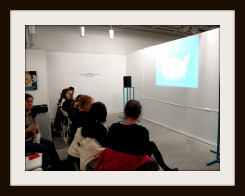
What is the difference between the book and the movie?
The book starts off with a time line of the indie craft community fantastically illustrated by Kate Bingaman-Burt. The is broken up into regions for the chapters which are divided by essays by community members. There are 24 makers featured in the book with a page of text for each and then 3-6 pages of images of their work, studio space, process, etc. The book gave us the ability to feature in depth more people than we can in the film. The film features 13 “featurettes” on specific people with a ton of smaller interviews and cameo’s from community members.
I have to ask about the Handmade Nation stitch pattern being
released by Sublime Stitching. How did that hook up come about and can you tell me about the designer?
I am so excited about the Sublime Stitching pattern we did. We are so lucky to have Jenny Hart and her company Sublime Stitching as a part of the indie craft community and she has been overly supportive of the documentary and book. We talked awhile back about doing a pattern with her company and it just madesense for our book illustrator/telegraphist Kate Bingaman-Burt to design it. Kate is an amazing designer now based out of Portland, OR who has a fascinating website called www.obsessiveconsumption.com where she illustrates and documents her daily purchases. I suggest checking it out. Kate and I have continued to work together on many projects after the book was complete and I look forward to working with her more in the future. The Handmade Nation / Sublime Stitching patterns went live this month and will be up until they sell out, they are a limited edition and a percentage of the sales go towards the expenses of the film.
This is the first in another weekly series for this blog, Thursday will be a review day for local spots! With all the places we check out around the city, especially foodie and crafty spots, this weekly was bound to happen eventually. First up is Creme, a new gelato spot on College in Little Italy.
Creme – 703 College St – www.cremebuzz.com
I hadn’t read anything about Creme before I went in for the first time, so I had no real expectation. I immediately loved the design of the cafe. There is a row of bench seating with tables and accompanying chairs by the front window. There is a lot of nice light in the afternoon and it would be a good spot to get some work done (WiFi coming soon, I’ve been told) while still enjoying the day.

Our trip to Creme started with my wee ones asking politely for gelato. Our out of town guests thought the concept of polite children was so crazy they decided we must all go for gelato. Choosing flavours was as hard for the adults as it was for the kids and when it came to truffles, it was even harder for the adults! We ended up with three different kinds; chocolate, green mint and ‘vanilla’ (it wasn’t technically called vanilla and had wee chocolate flecks in it). All three kinds were devoured immediately, except for one wee one, who managed to hold on to her unfinished cone all the way to Lillian Smith library! This gelato was much creamier than others I’ve tried recently, and the flavours were also much stronger (in the best possible way).


The presentation of their cakes and truffles reminded me of the Sweet Gallery in Bloor West Village, but the prices at Creme are so much better! The selection of the chocolates was nice for a cafe, and the small portion size goes along very well with a small coffee or espresso.
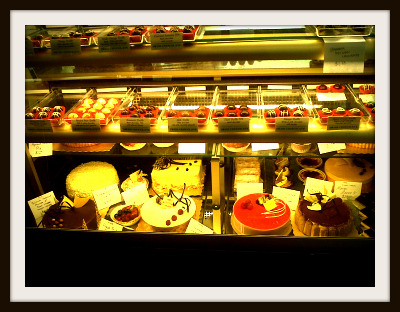
Part 4 of this new weekly venture features a seemingly random collection of wish list worthy gear I found while digging through a ‘must have’ folder in my bookmarks. Some items have sold out, but there are so many other treasures to be found with these sellers!
I was looking for ribbons to use as handles on a knitted bag and I found Griffith Gardens, full of beautiful ribbons and crocheted flowers. I especially love the double sided black satin ribbon! The crocheted flowers are well crafted – most of the stock at this shop is crocheted; scarves, letters even (love this!), coasters, throws and on and on.
I adore this bag more than any other in this week’s collection. Love, love, love it! It’s so sweet and girly and then you look a little closer and BAM, skulls. <3
Once on a bag rampage, I came across HautTotes, and immediately I was in love and I think these four examples can help explain why. Especially the Christmas pin up girls and the zebra print. I’d wear them all. the. time. The wee bows on the collection are sweet, enough to make them part of a set but not so much that it takes away from the bag. Pretty!
This apron is officially on my personal wish list. Last time I posted something here hoping I’d get it for Christmas the hint was not taken (joke’s on me) so this time around, I will buy this for myself! There are even matching pot holders!
Of course this little gingerbread number stole my heart, but seems to have been moved or taken down or lost in the dark recesses of the internet, but it was lovely and so very festive! The Zelda pillow is really close to home for me. Mr. SoVeryDomestic has an original Nintendo comforter that we still use from his childhood. On it are Mario and Luigi of course, the Princess, Bowser and hilariously, Link! I can’t think of a good reason to wear a vendor apron, aside from being a vendor, but they’re so cute I’d love to wear one.
Naturally, the next event in this chain is shopping for fabric to make amazing aprons! Duh! I was going for robots and man, did I ever find them over at Voodoo Rabbit. Not only robots but, ‘fabric, buttons & sewing supplies for the dark arts & craftist’. Fantastic! We’ll start with robots and move on to Spidery Web, Pink Skull Pinstripe, How to Get a Husband fabric is beyond amazing. <3
 |
When I first heard about Handmade Nation, I was over the moon. It was so exciting to me that such a thing existed, a book covering crafters all across America? Amazing that craftiness, in any form, has gotten to be not just socially acceptable, but cool. Obviously, if you’re here you have a taste for the slightly off-beat side of crafty, so you already know that knitting is rad and mod podge is something serious. The rest of the world doesn’t seem to know this though. Faythe Levine traveled 19,000 miles around America to talk to over 80 indie crafters about what they do and their take over a 2 year period |
|
to make a documentary about it. In that time it spawned into a book, while the film came together.
This book opens with a timeline and gives a wonderful look into how ‘the new wave of craft’ came to be what it is today (like from Debbie Stoller’s first Stitch n Bitch in NYC in 1998 to when MyMy went live in 2005 and when Knitta Please bombed Houston, TX the following year. It is filled with photos and write ups of so many extremely talented independent crafters – hello My Paper Crane! There are also essays throughout it by even more crafters on everything from the internet to activism, craft fairs, and of course, the Church of Craft Some of my personal faves include Lekkner, Sublime Stitching, and Naughty Secretary Club (love them). Then there are all the crafters I hadn’t heard of yet that I fell in love with once I read this book like; KnitKnit, The Small Object, Made With Sweet Love and Blissen. Pairing perfectly with the movie, I am sure. I can’t wait to see it! |
|


